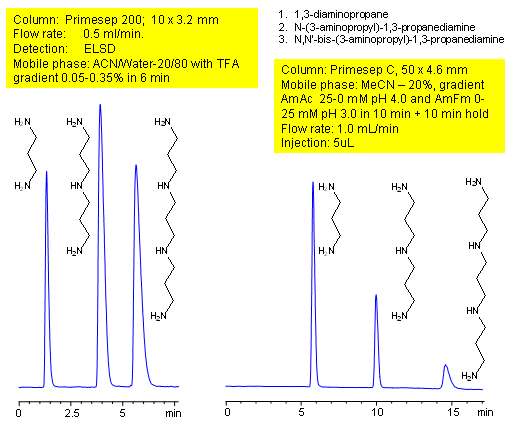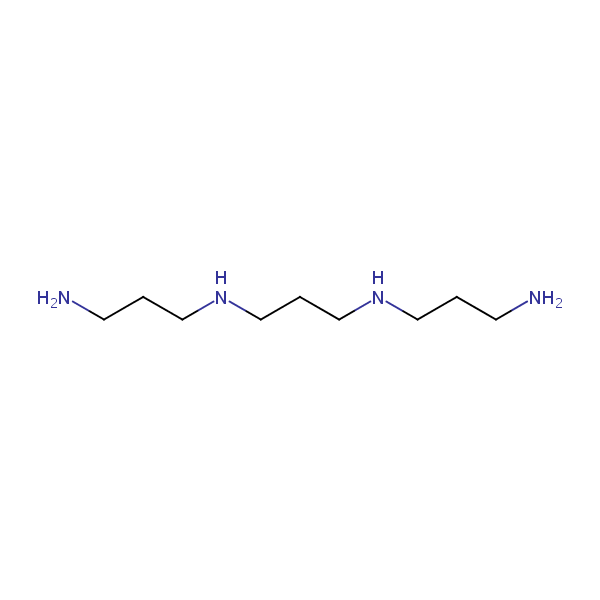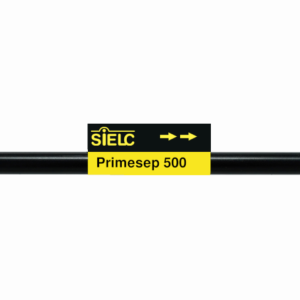| CAS Number | 4605-14-5 |
|---|---|
| Molecular Formula | C9H24N4 |
| Molecular Weight | 188.320 |
| InChI Key | ZAXCZCOUDLENMH-UHFFFAOYSA-N |
| LogP | -0.665 |
| Synonyms |
|
Applications:
HPLC Separation of Polyamines on Primesep 500 Column
June 26, 2020
HPLC Method for N-(3-Aminopropyl)-1,3-propanediamine (Norspermidine), Tetraethylenepentamine, Pentaethylenehexamine, N,N'-Bis(3-aminopropyl)-1,3-propanediamine, Ethylenediamine, Polyamines on Primesep 500 by SIELC Technologies
High Performance Liquid Chromatography (HPLC) Method for Analysis of N-(3-Aminopropyl)-1,3-propanediamine (Norspermidine), Tetraethylenepentamine, Pentaethylenehexamine, N,N'-Bis(3-aminopropyl)-1,3-propanediamine, Ethylenediamine, Polyamines.
Polyamines are both naturally occurring and synthetic. The naturally occurring polyamines have a variety of functions including ion channel modulation and biosynthesis of cells. The synthetic polyamines are used in motor oil and epoxy resins. Because of their strong ionic characteristics, they are not retained on reverse-phase columns and strongly retained on anion-exchange columns. In order to separate polyamines with varying numbers of ionic groups, we used a Primesep 500 HPLC mixed-mode column with embedded carboxylic groups of pKa around 5. By lowering the pH of the mobile phase, we can suppress the carboxylic groups on the column making it less retentive to polyamines. We separate the double and triple charged polyamines at one pH, then do a step gradient to lower pH to reduce the retention time and separate higher charged polyamines. The detection can be achieved with CAD or MS.
| Column | Primesep 500, 4.6 x 150 mm, 5 µm, 100 A, dual ended |
| Mobile Phase | H2O |
| Buffer | AmFm pH 3.0 – 20 mM, AmFm pH 3.5 – 20 mM |
| Flow Rate | 1.0 ml/min |
| Detection | CAD |
| Class of Compounds | Hydrophilic, Amines |
| Analyzing Compounds | N-(3-Aminopropyl)-1,3-propanediamine (Norspermidine), Tetraethylenepentamine, Pentaethylenehexamine, N,N'-Bis(3-aminopropyl)-1,3-propanediamine, Ethylenediamine, Polyamines |
Application Column
Primesep 500
Column Diameter: 4.6 mm
Column Length: 150 mm
Particle Size: 5 µm
Pore Size: 100 A
Column options: dual ended
N,N’-Bis(3-aminopropyl)-1,3-propanediamine
N-(3-Aminopropyl)-1,3-propanediamine (Norspermidine)
Pentaethylenehexamine
Polyamines
Tetraethylenepentamine

HPLC Separation of Polyamines
April 13, 2004

Primesep 200 separates the very hydrophilic polyamines, 1,3-diaminopropane, N-(3-aminopropyl)-1,3-diaminepropane, N,N-bis-(3-aminopropyl)-1,3-diaminepropane. The retention and resolution are affected by either a TFA concentration gradient, or a pH gradient from pH 4 to 3. This flexibility is obtained by simple mobile phases of water, acetonitrile (MeCN, ACN), ammonium formate, ammonium acetate or trifluoracetic acid (TFA) with evaporative light scattering detection (ELSD).
Application Column
Primesep 200
The Primesep family of mixed-mode columns offers a wide variety of stationary phases, boasting unprecedented selectivity in the separation of a broad array of chemical compounds across multiple applications. Corresponding Primesep guard columns, available with all stationary phases, do not require holders. SIELC provides a method development service available to all customers. Inquire about our specially-tailored custom LC-phases for specific separations.
Select optionsN,N’-Bis(3-aminopropyl)-1,3-propanediamine
N-(3-Aminopropyl)-1,3-propanediamine (Norspermidine)
Polyamines
Propylendiamine





